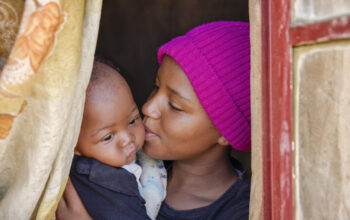Data over Dogma, What Can the HIV/AIDS Experience Teach us for Addressing the NCDs
The recent United Nations Summit on MDGs fueled the final push to achieve health-related Millennium Development Goals and focused attention on new Sustainable Development Goals (SDGs). It also caused me to revisit a 2011 report on improving access to drugs non-communicable diseases (NCDs) in developing countries and a report that I contributed to a John Hopkins University book back in 2012. In both I argued that reduction of the NCD burden requires a balanced use of prevention strategies and treatment of manifest disease, as it has been done in the successful fight against the HIV/AIDS epidemic and data-driven approaches.
Not that I want to discount the importance of prevention. Standing at a patient’s bedside or in the cardiac catheterization lab, I have experienced first-hand how limited our abilities are to reverse years of damage from poor health habits. Having trained at a public health school, I am very aware that better sanitation, nutrition and infection control have contributed more to longevity and prosperity of the human race than medicine.
But as a researcher I also know that reducing NCD risks is neither easy nor cheap. Changing the underlying, deeply ingrained behaviors is hard, especially if they are linked to cultural traditions, such as diet. And contrary to widely held assumptions, prevention is not always more cost effective than treatment, because cost effectiveness depends on the “number needed to treat/prevent,” which reflects how many people have to receive a given intervention to avoid, for example, one premature NCD death. Preventive interventions tend to require a much higher number needed to treat/prevent, as they have to be applied to a large number of people, who would never have developed the disease. And preventive interventions take a longer time to show an effect as they typically cannot turn back the clock.
So we need to find the right balance between prevention and treatment for NCDs based on data and not just on dogma, as the successful response to the HIV/AIDS epidemic has taught us. We may have preferred to curtail promiscuity and intravenous drug use, but we settled for condoms and needle exchange programs. While hoping to eventually eradicate the disease, we realized that providing access to treatment will be important for decades to come.
Finding this balance between prevention and treatment for NCDs is both more complex and more important than it was in the case of HIV/AIDS. More complex because the conditions are caused by a complicated interplay of generic risk, health-related behaviors, environmental factors and ageing; more important because the burden of chronic illness is higher by orders of magnitude, yet the austerity environment makes major additional commitments from donor countries unlikely. We must make sure to get the best return from limited resources through sound and unbiased analysis.
But I fear that the global health community is pushing dogma before data at this point. The UN Political Declaration, for example, calls out prevention as “the cornerstone of the global response to noncommunicable diseases” (paragraph 34) and discusses several preventive efforts in detail, but devotes only one sentence to treatment (paragraph 44e). The WHO “Best Buys” interventions to reduce the burden of NCDs also emphasize preventive measures. Such skewing of priorities may result, if fully implemented, in inefficient resource allocation and limit options at the community level. As countries are now implementing their NCD action plans as agreed at the World Health Assembly 2013, there is an urgent need for evidence-based decision making.
Fortunately, there are a variety of tools to help national and regional decision-makers and planners to facilitate such policy and resource allocation decisions. Most notably, an Inter-Agency Working Group (IAWG) on Costing, composed of UNICEF, World Bank, WHO, UNFPA, UNDP, and UNAIDS, has developed the One Health tool for supporting the costing, budgeting, financing and national strategies development of the health sector in developing countries with a focus on integrated planning and strengthening health systems. This model seeks to leverage the most useful components of the different tools that currently exist and is designed in a modular fashion allowing for program specific costing as well as health system component costing. The NCD chapter of the One Health tool is in process to be finalized soon.
In my mind, the first step towards reducing the NCD burden is to use such tools to formulate an action plan for each jurisdiction that defines the right balance of prevention and treatment interventions given local conditions and resources. Based on data not on dogma. The second step is to involve a broad range of stakeholders to launch collaborative effort.
The good news is that we are starting from a strong position. In contrast HIV/AIDS, where it took years to understand the biology of the disease and develop potent drugs, prevention and treatment of NCDs are well-researched. Many drugs are available, commonly as low-cost generics, and an active development pipeline exists. We don’t have to fear resistance formation so that drugs that are effective today will be effective tomorrow. But the one thing that we do not have is time and we must act before NCDs cripple developing countries.
Author





